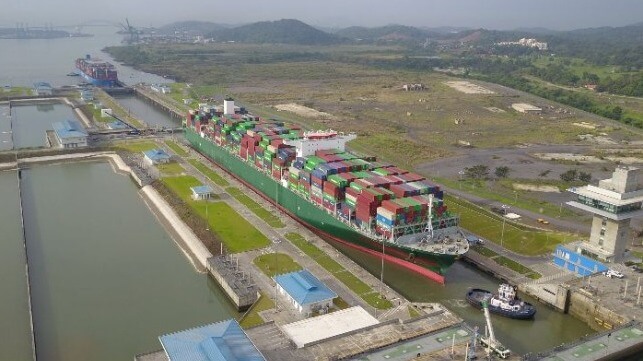Panama Canal’s Continuing Draft Reductions Pose Threat to Trade

Concern is growing that a significant climate event is unfolding at the Panama Canal, with the potential of impacting one of the world’s most important shipping routes. Last week, the Panama Canal Authority (ACP) said drought conditions in the region persist, affecting water availability for passage through the locks and raising the potential of further restrictions.
The Panama Canal Authority reports that May 2023 was the driest since 1950. Climatologists are saying that this is expected to worsen due to the arrival of the El Nino phenomenon, which is associated with warmer weather conditions across the Central American region. In this case, water-saving measures will continue to be a priority for the ACP.
It is not the first time the Panama Canal has experienced these problems. In the 2015-2016 season, extreme weather conditions and efforts to reduce water consumption reportedly cost the ACP approximately $40 million in revenues. Three years later in April 2019, the ACP notified customers that it was imposing a draft restriction of 44 feet, lowing it a full foot in just one month.
While the drought conditions lessened and the restrictions were eliminated, the water-saving measures at the canal were reintroduced and have been ongoing since January. The ACP has so far announced six draft-level adjustments, forcing ships to reduce the volume of cargo they carry. Starting in April, the ACP lowered the maximum from 50 feet first to 47.5 feet and then on a sliding scale down to 46 feet as of mid-May.
These adjustments majorly affect the vessels transiting the “neopanamax” locks. Inaugurated in 2016, the new locking system made it possible for the Panama Canal to accommodate double the size of vessels it previously handled.
With the latest restrictions, neopanamax vessels are now permitted a draft of 44.5 feet (13.56m), down from the normal draft maximum of 50 feet (15.24m). A further restriction to a new draft limit of 43.5 feet (13.26m) is expected to take effect from June 25. Such significant draft reductions present a huge threat to inter-regional trades, specifically cargo from Asia to the U.S. East Coast, Europe to the South America West Coast, and the U.S. Gulf Coast to the Far East.
“With the ongoing tightening of draft regulations in the Panama Canal, smaller ships may return to favor with the carriers, as they find themselves unable to utilize the full capacity of larger vessels,” predicted Peter Sand, Chief Analyst at the Oslo-based ocean freight-benchmarking platform Xeneta. “This puts upward pressure on short-term market rates and may prompt shippers to alter their supply chains if port calls also change in line with the ship sizes,”
Some industry analysts have forecasted that the new draft regulations could force some boxships to reduce their cargo by 40 percent. Considering around 285 neopanamax ships transited the Panama Canal in April, half of which are containerships, continued draft reductions could have significant ramifications for international shipping.
The effect of the restrictions is already being felt in parts of the shipping industry. Hapag-Lloyd, the world’s first largest containership operator, recently introduced a PCC (Panama Canal Charge) of $500 per container. The surcharge took effect on June 1, levied on all cargoes loaded on Asia to U.S. East Coast routes via the canal.
Shippers and carriers both have been rerouting cargoes away from the U.S. West Coast ports for nearly a year due to the prolonged contract negotiations with the longshore union for the Pacific Coast ports. While container volumes have declined from the peaks during the pandemic, concerns are now growing as the ILWU’s members staged a no-show for their shifts on June 2, marking the second time in two months they have disrupted work at ports in California and in the latest action at other West Coast ports.
Analysts also highlight that the Panama Canal has become an increasingly important route for LNG carriers. The U.S. continues to grow its energy exports from the Gulf Coast with the canal providing a vital route to buyers in Asia for the gas exports.
No comments:
Post a Comment